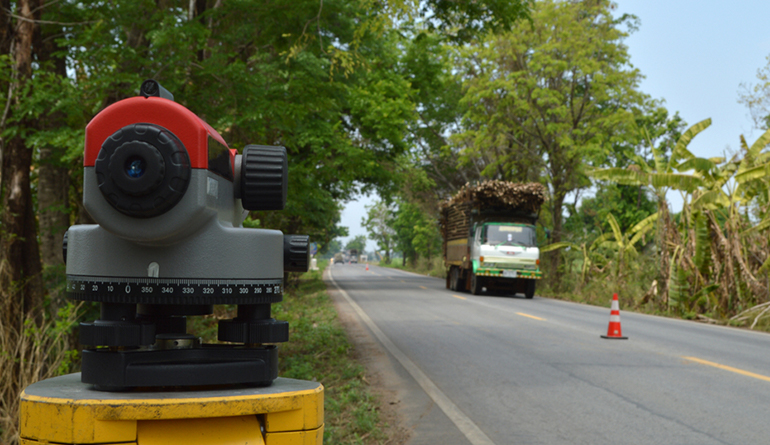
Road Survey
A road survey involves the collection and analysis of data related to the planning, design, construction, maintenance, or improvement of roads and highways. This type of survey provides essential information to engineers, planners, and decision-makers involved in transportation infrastructure projects. Here are some key aspects of a road survey:
Route Selection: Surveyors may assess potential routes for new roads or improvements to existing ones. This involves studying topographic maps, conducting field surveys, and considering factors such as terrain, environmental impact, land use, and cost.
Topographic Survey: This involves measuring and mapping the natural and man-made features of the land along the proposed road corridor. It includes details such as elevation, slopes, existing structures, utilities, water bodies, and vegetation.
Alignment Survey: Surveyors determine the precise location and alignment of the road, including curves, grades, and intersections. This is crucial for ensuring safety, efficient traffic flow, and adherence to engineering standards.
Geotechnical Survey: Assessing soil conditions along the road route is vital for designing appropriate foundations, embankments, and drainage systems. Geotechnical surveys evaluate soil types, stability, compaction, and groundwater levels.
Environmental Survey: Road projects often require environmental impact assessments to identify potential ecological sensitivities and mitigate adverse effects on habitats, water resources, and air quality. Surveys may also involve compliance with regulations related to wetlands, endangered species, and cultural heritage.
Utility Survey: Identifying the location of underground utilities such as water pipes, gas lines, electric cables, and communication networks is critical to avoid conflicts during construction and minimize service disruptions.
Right-of-Way Survey: Determining the boundaries and ownership of land needed for road construction or expansion involves conducting right-of-way surveys. This involves legal research, boundary marking, and negotiations with landowners.
Traffic Survey: Collecting data on traffic patterns, volumes, speeds, and vehicle types helps engineers design roads that accommodate current and future transportation needs safely and efficiently.
Pavement Condition Survey: Assessing the condition of existing pavements helps prioritize maintenance and rehabilitation efforts to ensure the safety and longevity of road infrastructure.

